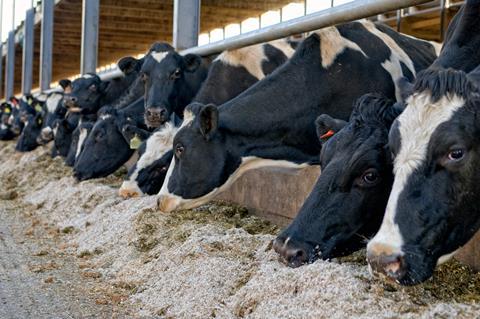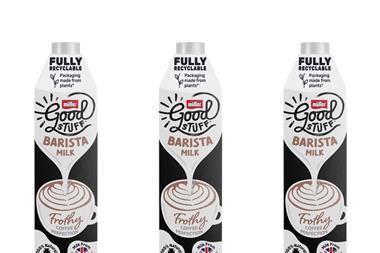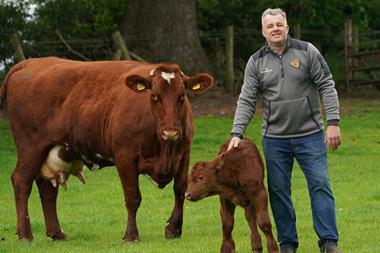
UK dairy farms will need to invest more than £3.9bn over the next 10 years to improve their climate resilience, new research by Kite Consulting has estimated.
A new report by the agricultural consultancy, published this week, warned large on-farm infrastructure investments in areas such as silage and slurry storage would be required to meet the challenge of increasingly regular extreme weather and new environmental regulations.
Kite’s Cost of Climate Resilience study calculated each of the UK’s 850 dairy farms would need to invest an average of £475,539 to “ensure the long-term production of milk in the UK”, with the sector’s demands needing to be “supported throughout the supply chain”.
This represented an additional 2.4p per litre of milk for 10 years on average, and meant inflation would remain “embedded” within the category, suggested Kite director John Allen, despite a fall in the overall cost of farming inputs over the past year.
Given the impact of extreme weather on the sector in recent years, the report said farms would need an additional 1,350 tonnes of silage storage, taking the total required to 4,087 tonnes per farm “for [feed] cover in case of drought or late grazing turnouts” – the equivalent of one and a half years’ worth of silage stocks.
An estimated 85% of dairy farms also had less than the recommended eight months of slurry storage capacity, while 92% of dairy farmers did not have covered slurry storage facilities.
Investment in capacity would be key in ensuring businesses met strict new environmental laws, particularly given how 48% of dairy farms were looking to increase milk output within the next three years.
This need was especially pressing for those in Nitrate Vulnerable Zones (NVZs) – areas designated as being at risk from agricultural nitrate pollution, which made up about 55% of England’s farmland.
To comply, farmers must have a minimum of five months storage for cattle slurry and meet various limits on the amount of nitrogen they applied to fields, from organic and inorganic sources, the report explained. In Wales, the Water Resources Control of Agricultural Pollution Regulations 2021 have similar regulations as to those under NVZs.
Other rules such as the Clean Air Strategy 2019 called for all slurry stores to be covered by 2027.
And whilst there has been no formal consultation on these proposals yet, and hitting the 2027 target was currently looking unlikely, it was “still likely the industry will face increasing regulatory requirements in this area over the coming years”, the report warned.
As a result of these baked-in costs, break-even for most dairy farms was now around the 40ppl mark for conventional milk, up from around 30ppl in 2021-22, Kite warned. Defra’s most recent UK average farmgate milk price for April stood at 37.21ppl – significantly below the new break-even standard.
“Without this investment, the industry will be unprepared for extreme weather events. This is likely to jeopardise the future of some of these farms and put milk production at risk,” or worse still leave farms at risk of prosecution, the report warned.
It follows warnings by Kite late last year over UK Climate-related Financial Disclosure legislation (so-called TCFD) – which requires businesses to report on any risks posed by climate change that have a material impact on the value of a company and its assets.
TCFD threatened the viability of many under-prepared dairy farming businesses, the consultancy suggested, as it called for more work to be done to better understand the climate risks faced by the sector.



















No comments yet